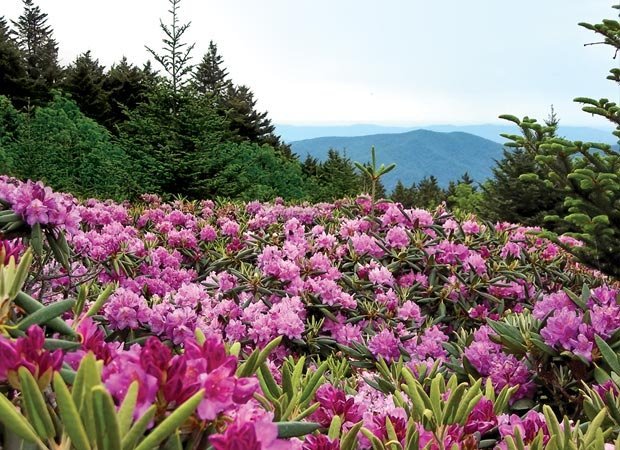The Wild Importance of Native Plants
A native plant garden. Photo by TN Nursery.
April showers have undoubtedly come, and as the saying goes, they are about to bring May flowers. The world is coming to life around us – green leaves cover tall trees, giving us shade from the warming sun, and colorful flowers bloom in parks, adding beauty to our everyday tasks. As many of us break out our gardening gloves, wheelbarrows, and shovels, we are ready to add some of these beautiful plants to our homes, whether that be in our yards, gardens, patios, or porches.
But how many of these plants are native to East Tennessee? Native plants are “those that occur naturally in a region in which they evolved.” They are plants that lived in East Tennessee long before humans did, which means they are able to survive the East Tennessee climate without our assistance. Often when I buy a new plant that is non-native, one of the first things I do is research its native climate. Knowing if a plant comes from a tropical rainforest or a dry desert informs how I will care for the plant. Take for instance the tropical hibiscus plants I grow on my apartment balcony – they are used to humid, wet climates, and I have to water them multiple times a day in the hottest part of summer. They are not native to this climate, so they can’t survive without constant care and attention. Native plants, on the other hand, are strong, independent plants who don’t need gardeners.
The Benefits of Native Plants
Azalea bushes in the Great Smoky Mountains. Photo by Smoky Mountain Living Magazine.
- They provide food and shelter for pollinators. Birds, butterflies, and bees love native plants! Native plants provide animals and insects with diverse food sources and habitats, which aren’t always available in manicured gardens. Native plants also attract insects that are the primary food source for birds and other wildlife.
- They are drought resistant and require less water. Native plants thrive in an East Tennessee climate, because that is what they are familiar with. They are hardy and need less water, because they have already adapted to the constant ups and downs of East Tennessee weather.
- They use less pesticides and fertilizers. Native plants are resistant to pest problems, which means less chemicals are needed to maintain the plants and keep them safe from pests. These chemicals often can create runoff into creeks and rivers which affect our water quality, so reducing or eliminating the use of these chemicals can help improve our water quality.
- They are beautiful! Native plants reflect the landscape of East Tennessee – from azalea bushes to the tulip poplar trees, native plants are closely tied to what makes East Tennessee so special. In a part of the country known for its natural beauty, the native plants play a crucial role in making East Tennessee unique and biologically diverse.
- They support the ecosystem. Native plants help maintain the delicate balance of the ecosystem. By providing food and shelter to pollinators, requiring less water, and using less fertilizer, they help keep our landscape wild and self-maintaining.
Common Native Plants in East Tennessee
Clockwise from top left: Late purple aster, Tulip Polar Tree, Purple Coneflower, Dogwood Trees. Photos by Gardening Know How; Fast Growing Trees; TN Valley Wild Ones; and Southern Living.
TREES
Maple (Red, Silver, Sugar)
Oak (Black, Scarlet, Southern Red, White)
Tulip Poplar
FLOWERS
Black-eyed Susan
Creeping phlox
Dwarf-crested iris
Late purple aster
Purple coneflower
SHRUBS
Azalea
Hazelnut



